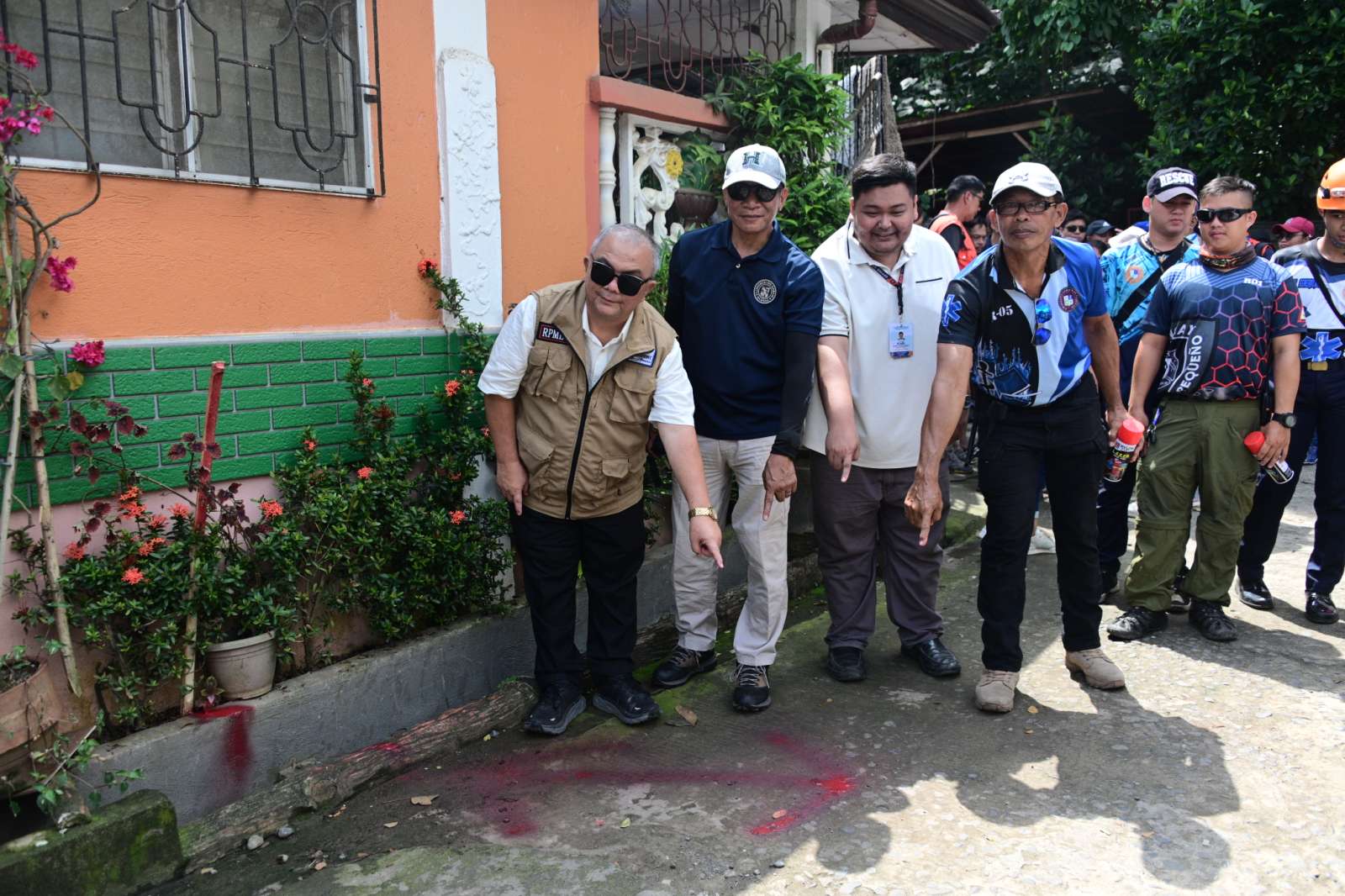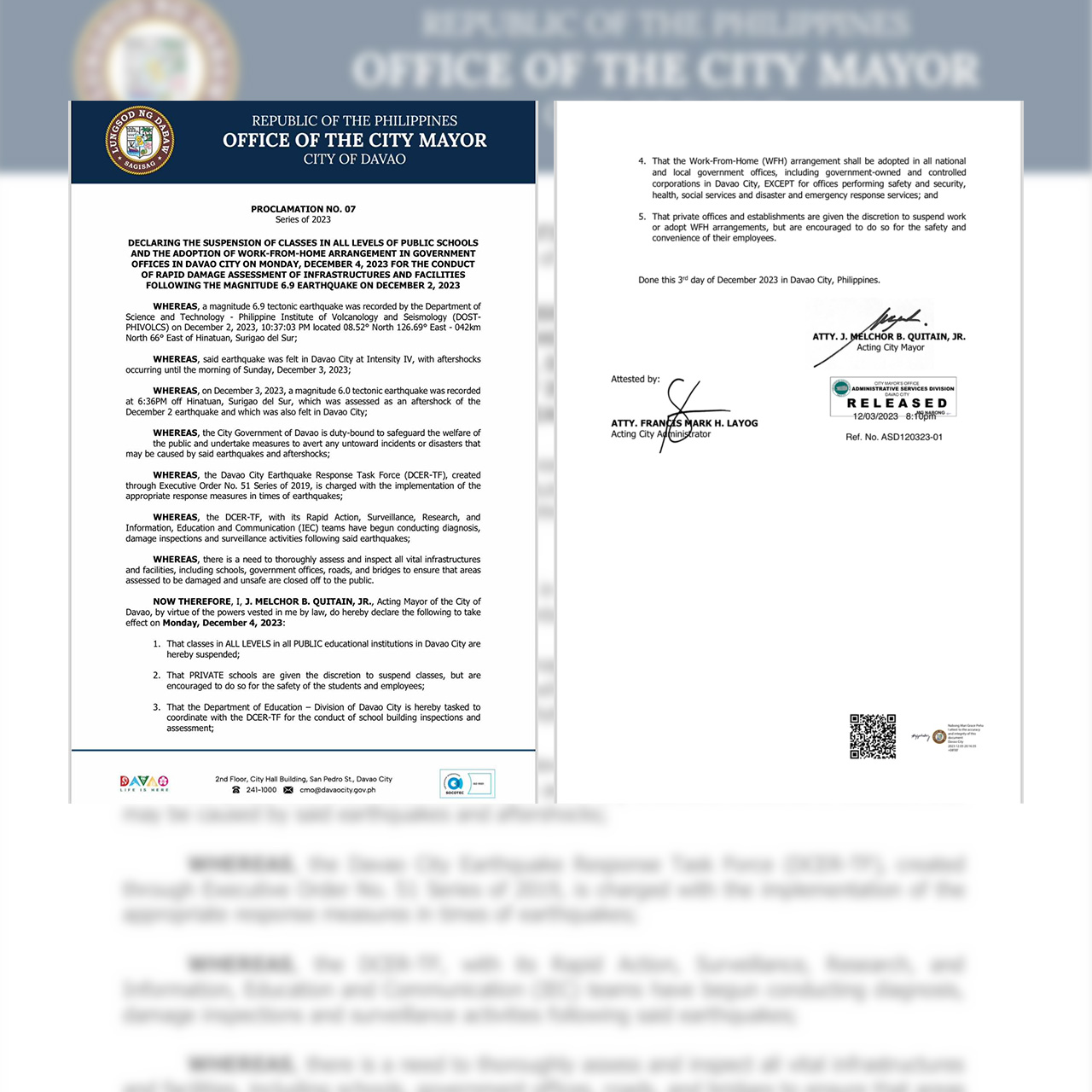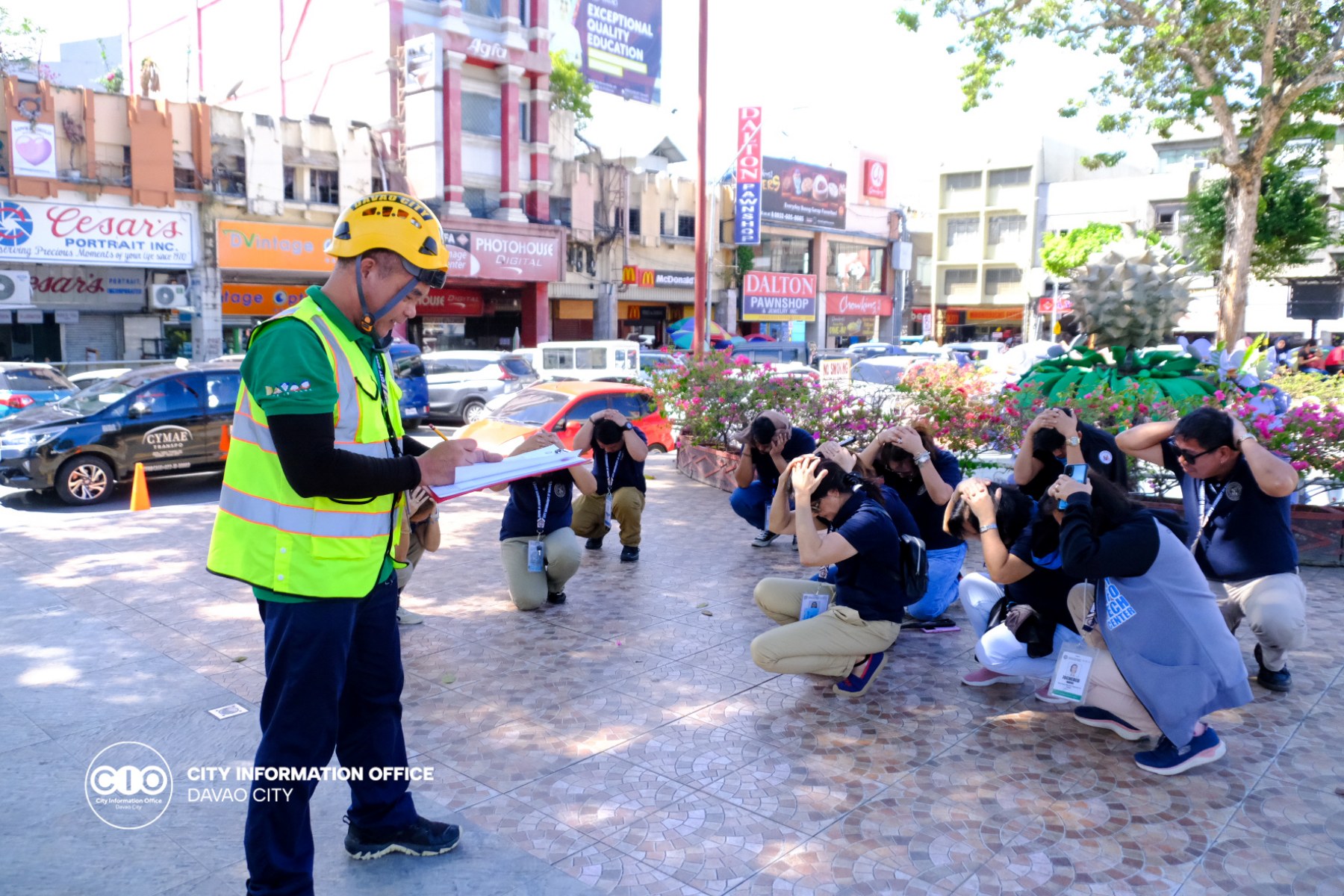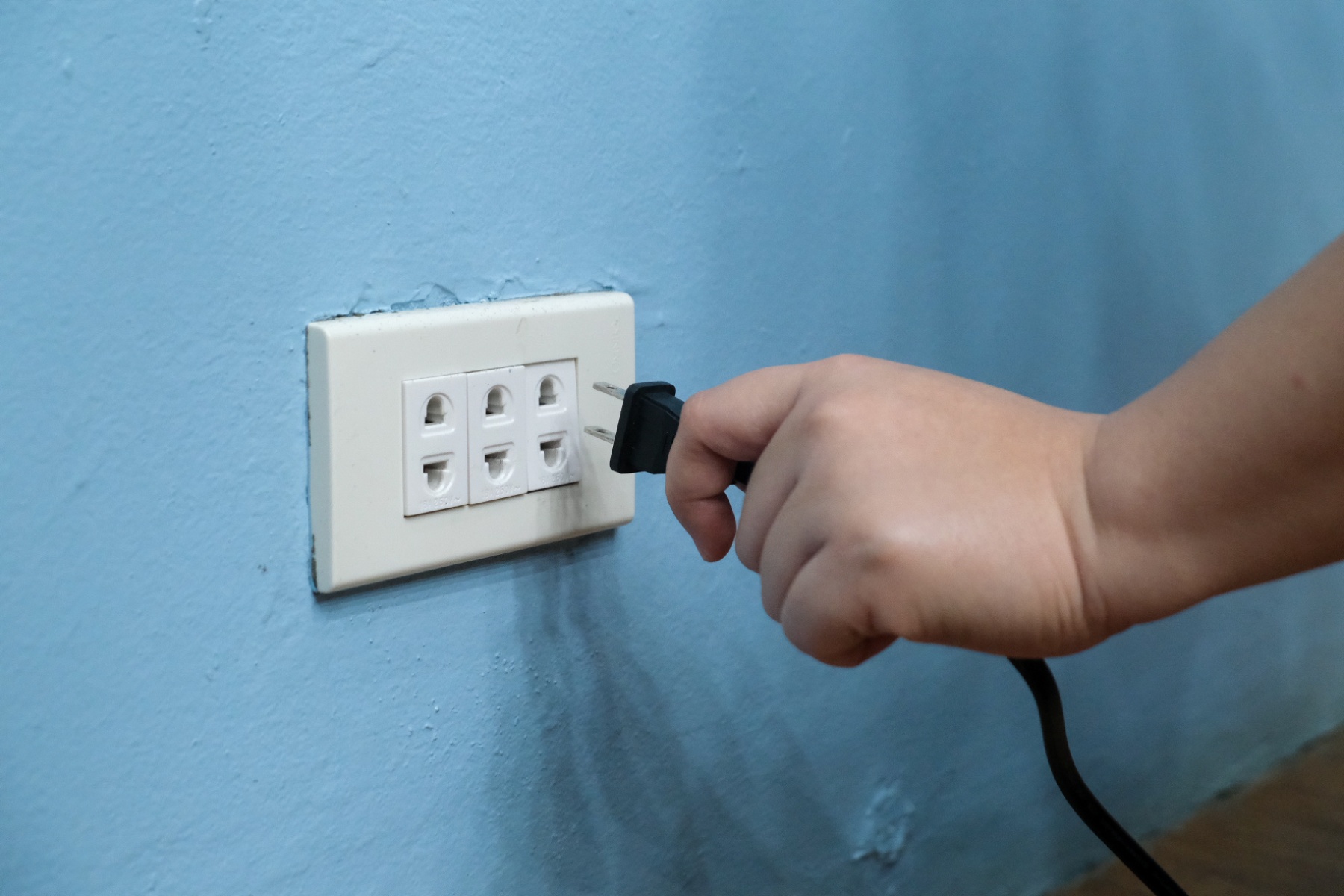Residents of barangays, Catalunan Pequeño, Sto. Niño and Tugbok on Monday were warned about the dangers of active fault lines in their area and were informed of how to respond to strong earthquakes during the launching of the week-long Walk the Fault Activity conducted by various local and national government offices.
City Disaster Risk Reduction and Management Office (CDRRMO), in partnership with the Office of the Civil Defense XI, Philippine Institute of Volcanology and Seismology (PHIVOLCS), and Department of Science and Technology (DOST) XI on Monday started the activity with a Simultaneous Information and Education Campaign at the Catalunan Pequeño Barangay Gym, which was followed by a simultaneous Walk the Fault there. The activity runs from November 20-24, 2023.
Throughout the week, the Walk the Fault activity targets three barangays and communities therein. These are Barangay Sto. Niño (Bambu Estate, Camelia Cerritos), Barangay Tugbok (Deca Homes Tugbok), and Barangay Catalunan Pequeño (Wellspring Village Phase I-III, Granville, the Sincere).
CDDRMO Head Alfredo Baloran, in his speech during Monday’s event said that they had intentionally invited barangay officials and purok leaders to for easy information sharing with the grassroots.
“Gi-require namo ang barangay officials to be present sa activities, especially ang atong purok leaders kay sila ang naa’y dako kaayo og tabang ani nga activity para mai-disseminate nato no, atoang mai-share sa atong ginsakupan sa purok kung unsa’y importansya sa atong pagahimuon karon (We have required the barangay officials to be present in the activities, especially our purok leaders because they can be a great help in the activity so that the information can be easily disseminated and shared with the purok members),” Baloran said.
Baloran said that since it was only in 2015 that the technical studies revealed these fault lines, their office – together with key agencies – found it necessary to inform the residents to avoid serious damages in the event of earthquakes.
He said that the area in Catalunan Pequeño is being traversed by the Dacudao and Tamugan faults.
Supervising Science Research Specialist – Geologic Disaster Awareness and Preparedness Division Jeffrey Perez told residents about the fault lines within the city and those that traverse their barangays.
He also discussed the identified faultlines in the city which are the Tamugan Fault, Lacson Fault, Dacudao Fault, Pangyan-Biao Escuela Fault, and New Carmen.
Perez also discussed the effects of having these fault lines and how people can respond to strong earthquakes.
Mirasol Domingo, DOST Assistant Regional Director, said that the advantage of the Walk the Fault and the information drive is that the technical terms usually associated with earthquakes are explained in layman’s terms.
“Ang pinaka punto gyud sa ginapanghisgutan karon with the community is unsa ang gina-ingon nga fault tapos kung unsa ang kanang common term, kanang fault–“liki”–, unsa ang gina-ingon ana nga liki ug unsa ang mahitabo kung ang imong panimalay or istruktura naa sa ibabaw sa fault (The main point of the discussion with the community is to explain what a fault is and its common term, “liki”– what that fault means, and what will happen if your house or structures are above it),” Domingo said, adding that a visual presentation of the effect of an Intensity 8 jolt was shown.
After the IEC presentation, the team went to the site and marked the area with faultlines. Red spray paint was used on concrete surfaces while a bamboo stick painted with red was used to mark areas that are not concrete.
Baloran urged residents to leave these markers as they are and to not transfer them to other places. He also urged the villagers to listen to and follow advisories from their office and keep abreast of the latest updates on Davao City Disaster Radio, which relays advisories coming from their office sourced from national government agency partners.
Perez said from less than 20 seismic stations they had in the 1990s, they now have more than 120.
“We now have more than 120 seismic stations strategically located that even na kahit na earthquakes coming from Indonesia, Japan nare-record natin and even nuclear explosions (We now have more than 120 seismic stations strategically located, that even earthquakes occurring in Indonesia and Japan are recorded, even nuclear explosions),” Perez said.
He also added that compliance with the Building Code is necessary to avoid damage during earthquakes. CIO









